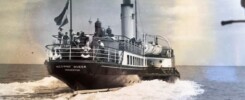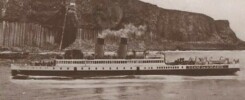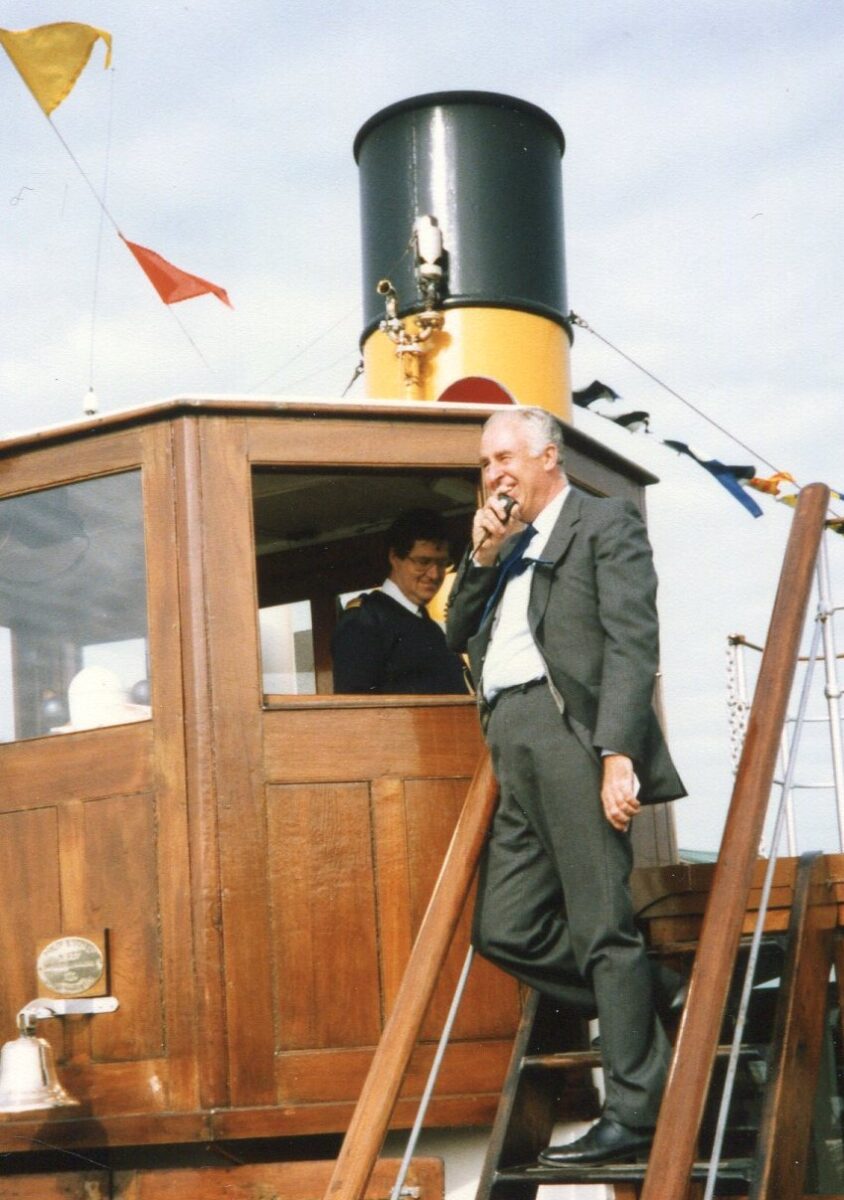
The late Stafford Ellerman left meticulous records of his extensive travels both in this country and abroad. In this he followed the example his Uncle Lewis Wood. He was a civil servant by day at the Royal Arsenal at Woolwich but in his time away from work, and maybe at work too sometimes, he dreamed about ships and boats. He made models of them. He took pictures of them. He travelled on them with his wife Celia often drawing maps of where they had been. And he kept records of all his trips from an excursion aboard PS Golden Eagle in 1909 onwards up to his last recorded voyage aboard the Cross Channel ferry Falaise from Southampton to Rouen in 1953,
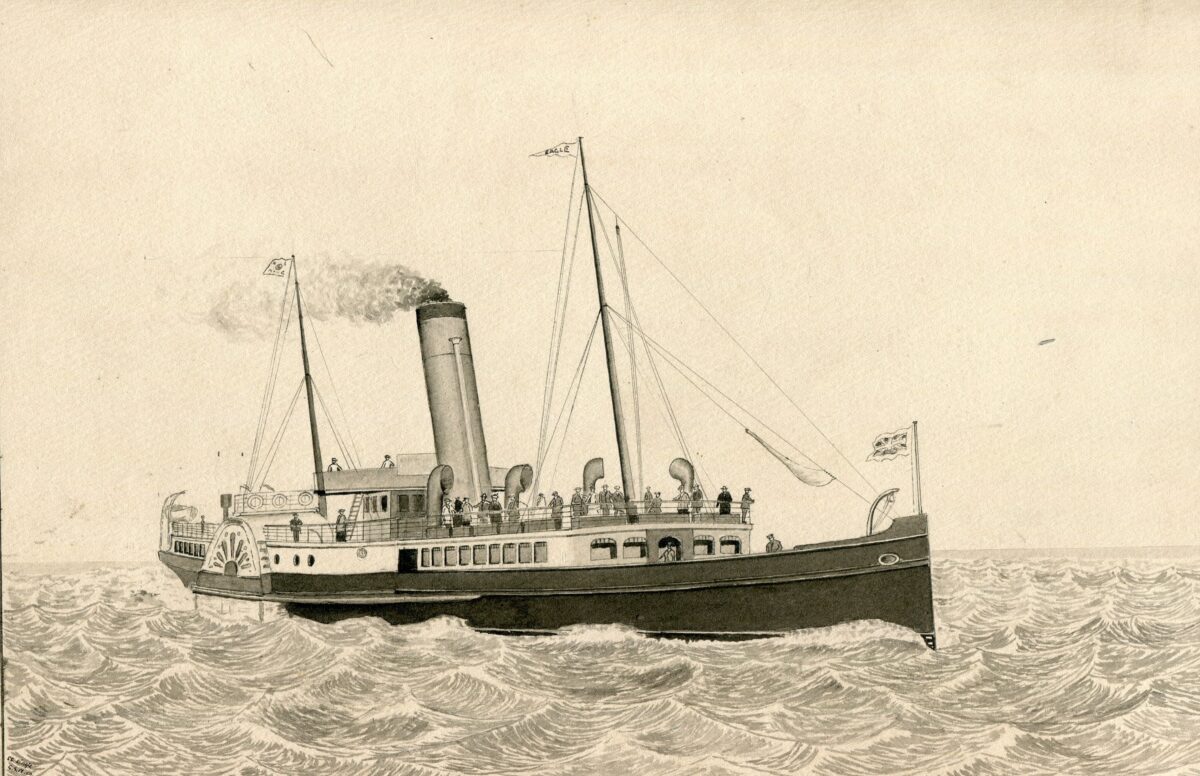
Here is a picture by Lewis of PS Eagle. Loosely based on a similar design to the Belle steamers she was built in 1898 for the General Steam Navigation Co’s service from London to Margate and Ramsgate to compete with the slightly larger Royal Sovereign of New Palace Streamers. She continued in service on the Thames until 1928 when she was scrapped thirty years after being built.
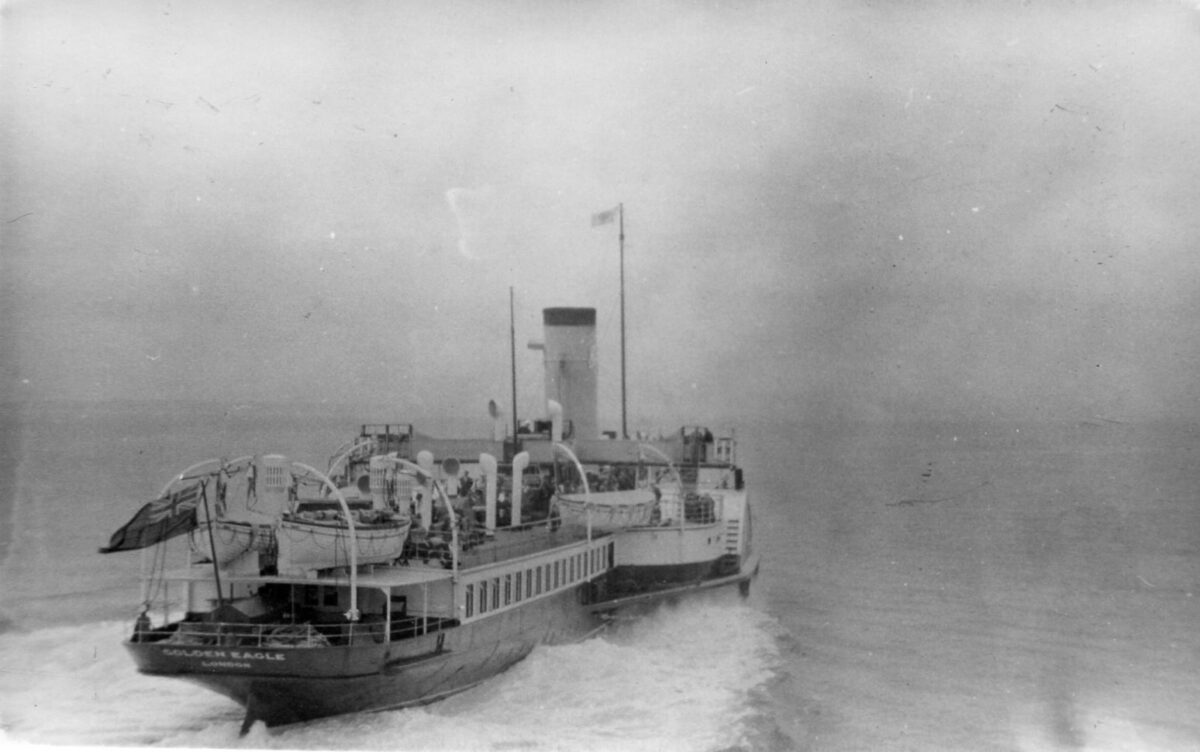
One of his earliest accounts for which he took photographs and produced a picture was a visit to a Naval Review off Southend on 21st July 1909 during which the brand new PS Golden Eagle took passengers out to go aboard HMS Indomitable. She was built in 1907 as one of three ships in the Invincible Class of Cruisers ordered as part of the escalation in the then arms race between Britain and Germany. She had a short career being scrapped in 1921 just 14 years after she was built.
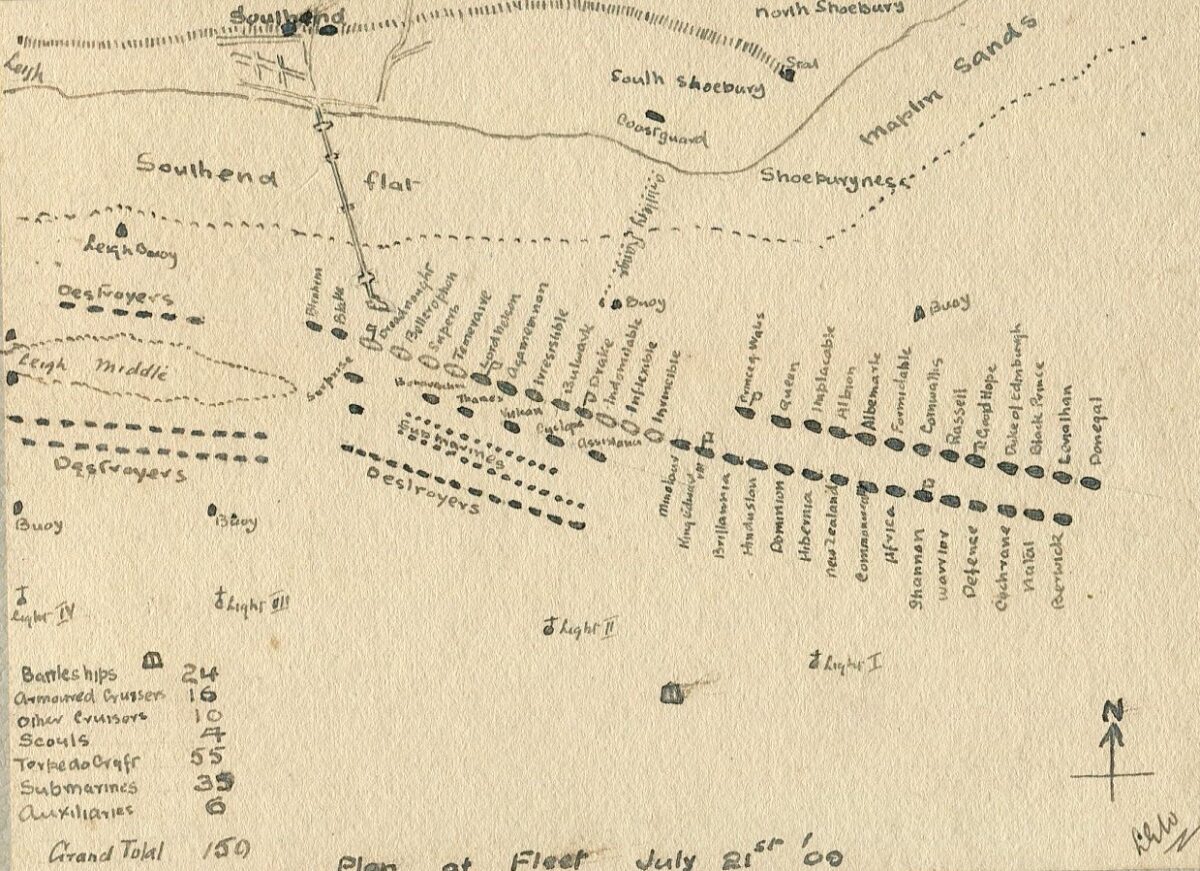
This event off Southend followed a similar Naval Review at Spithead in June 1909 and showed off to the world Britain’s naval supremacy with no fewer than 150 British warships including 24 Battleships, 16 Armoured Cruisers, 10 other Cruisers, 4 Scouts, 55 Torpedo Boats, 35 Submarines and 6 Auxiliaries.
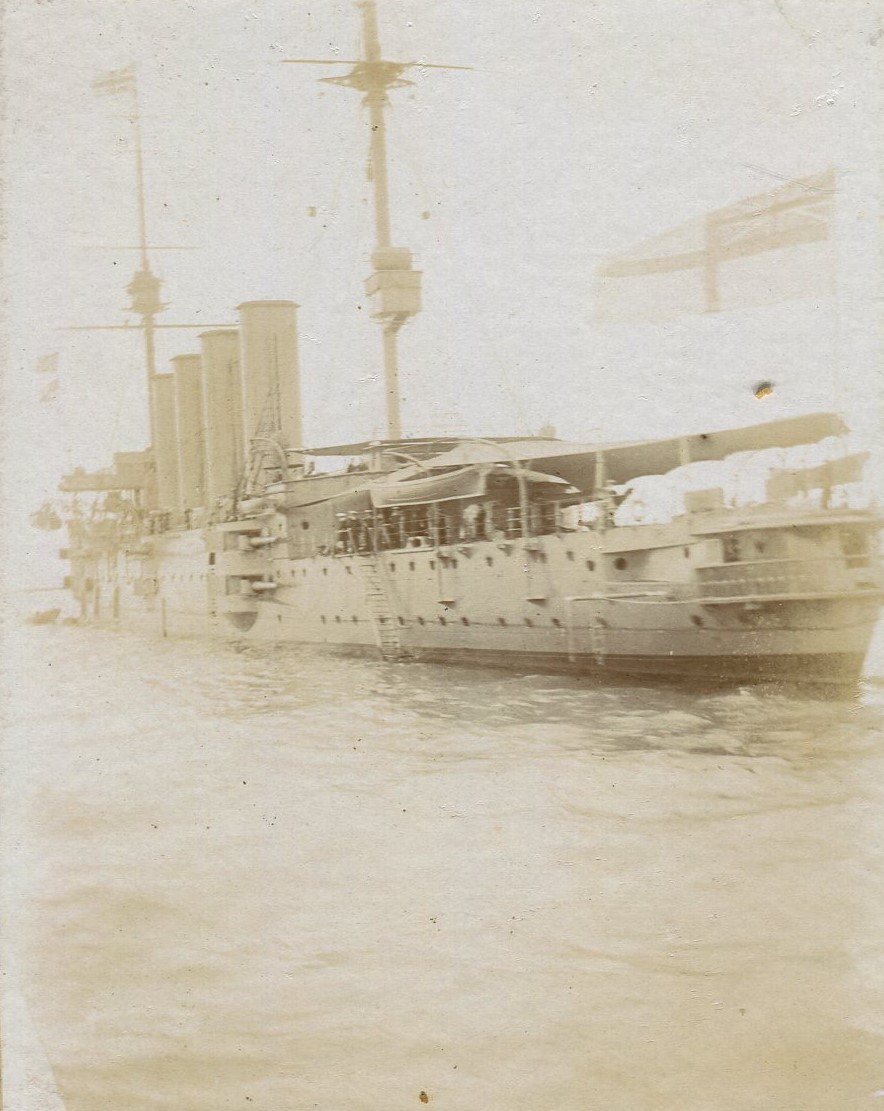
This picture was taken by Lewis sailing through the fleet aboard Golden Eagle and here coming up to take a closer look at HMS Drake (1901 – 1917).
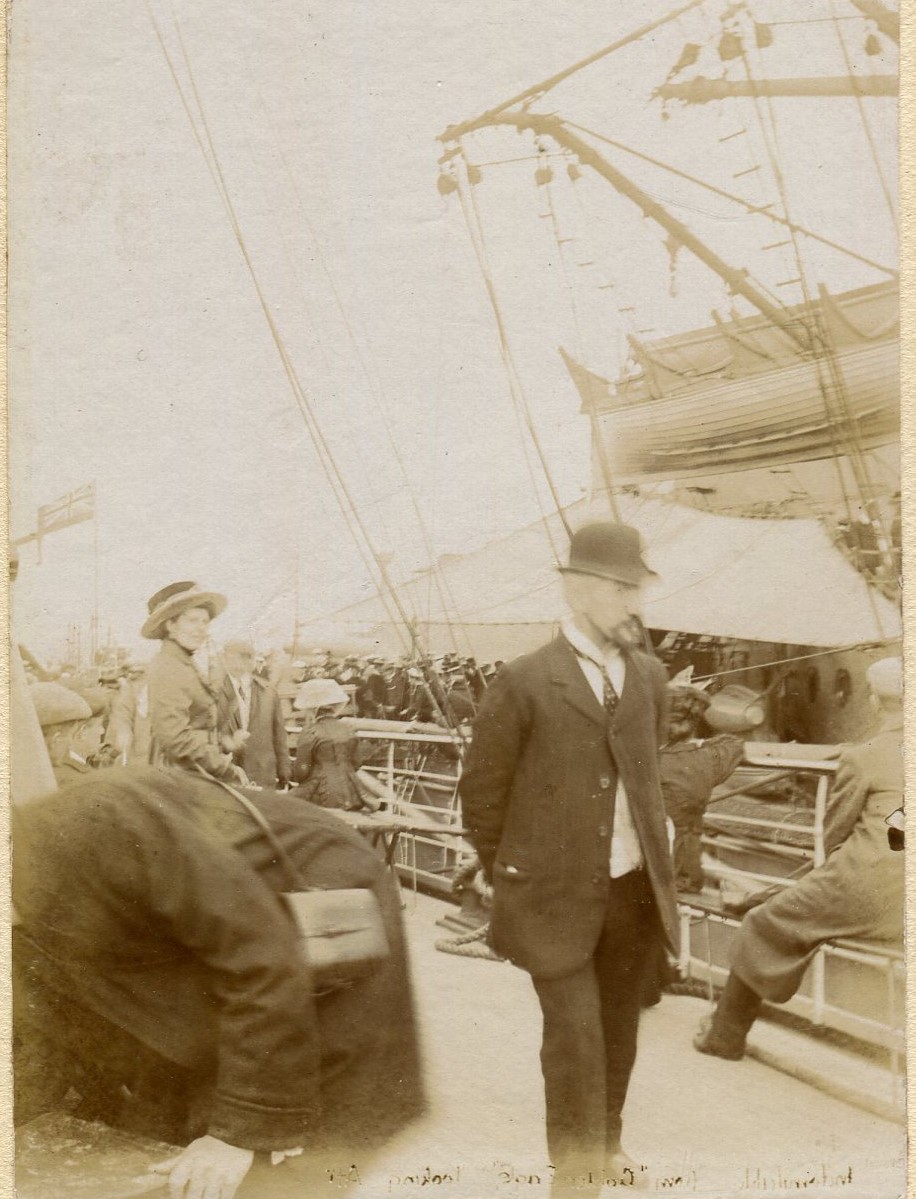
In this picture Golden Eagle is berthed alongside HMS Indomitable at this review. These visits of passengers delivered by paddle steamers to warships around the country from time to time to “See the Ships and Meet the Men” were much encouraged by the Government. They gave the “Owners” as the tax paying public was often described, the opportunity to keep up to date with naval and military developments and also helped to keep them onside and supportive of Government Foreign Policy particularly at times of growing international political tensions abroad.
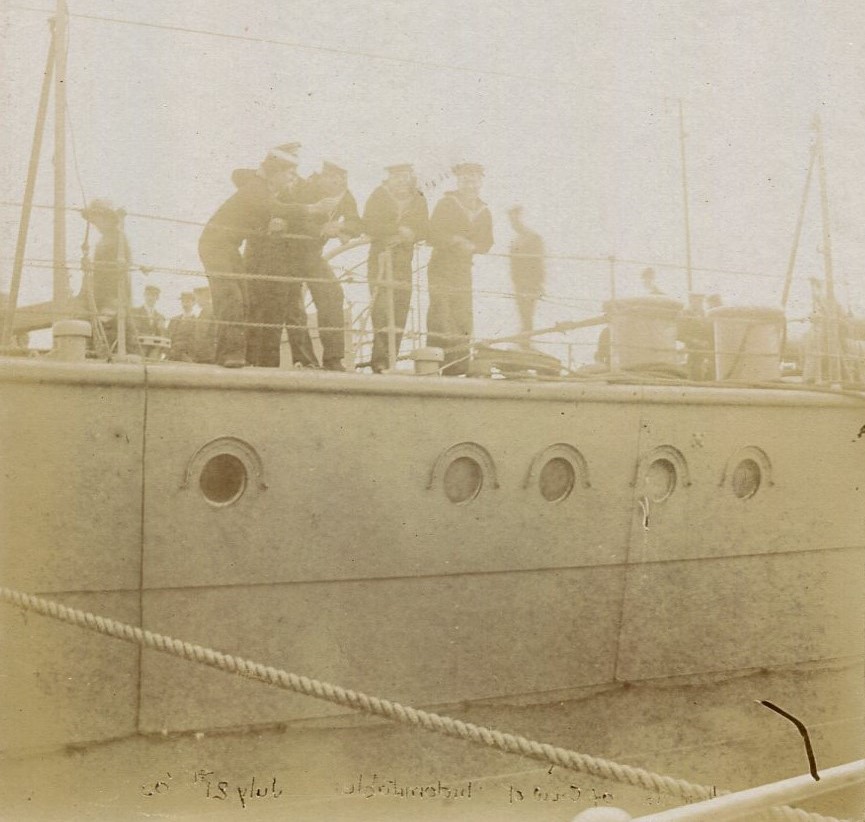
They also fostered goodwill between the general public and the serving sailors and doubtless kept the crews better contented by sometimes providing opportunities to foster closer relationships.
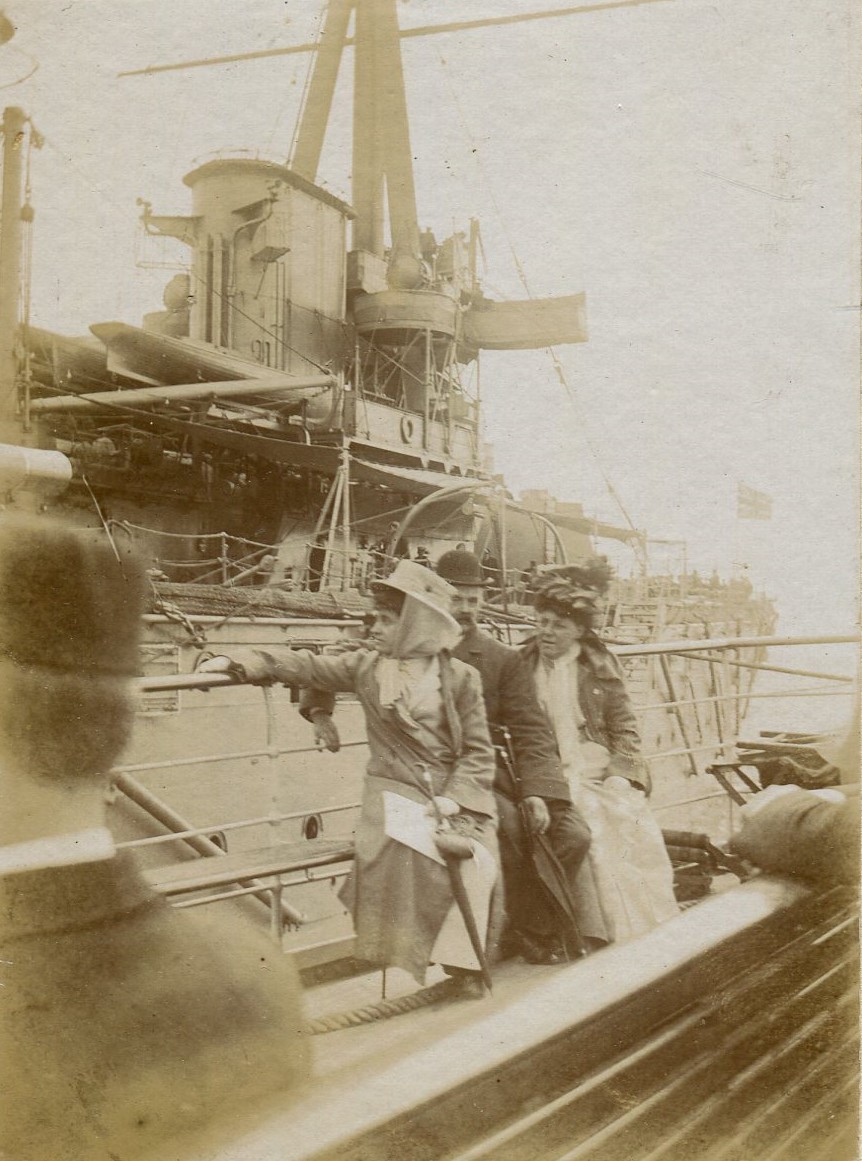
In this family group the daughter aboard Golden Eagle looks as though she may be returning the glance of a seaman aboard HMS Indomitable. The rather stern-faced mother on the right is looking at the daughter and seems to be saying something maybe telling her not to encourage them. Dad in the middle is looking the other way.
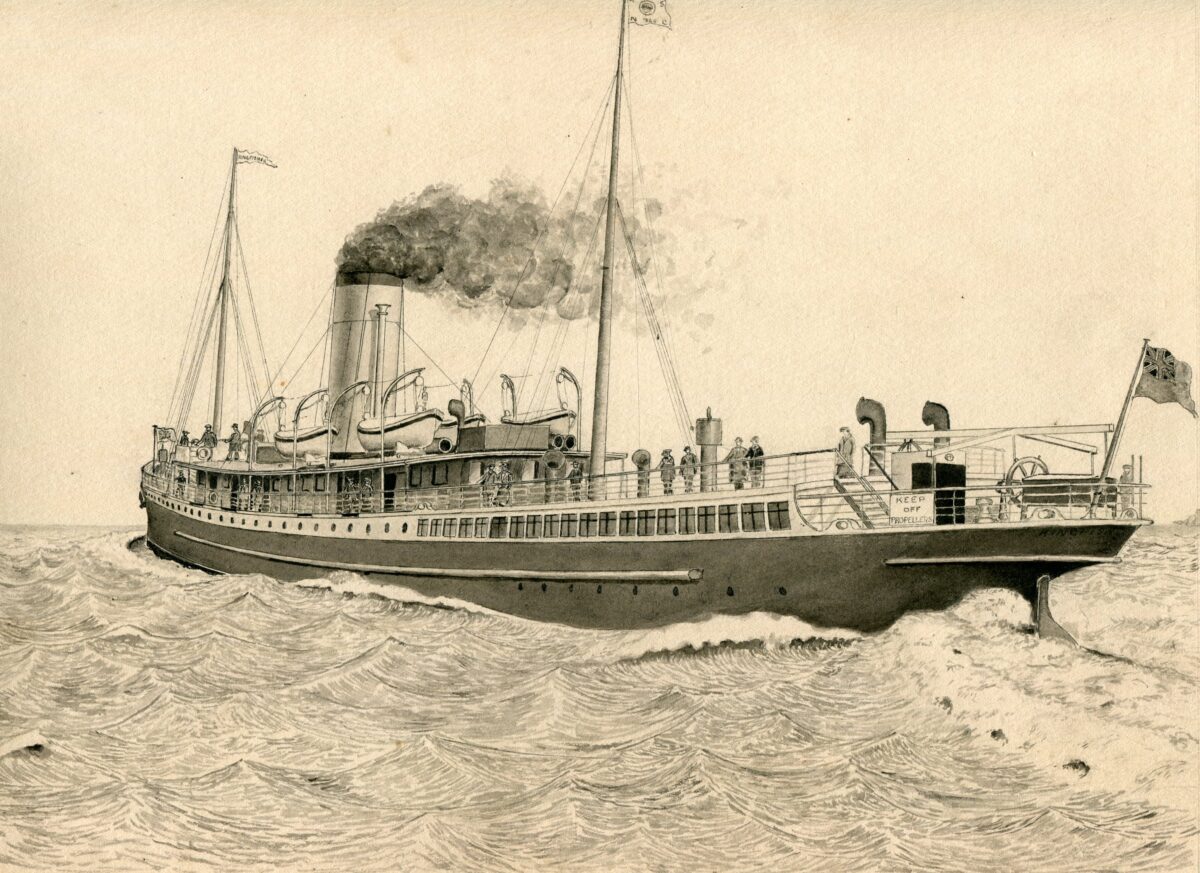
Here is another picture by Lewis Wood, this time of the SS Kingfisher, a Thames excursion steamer thirty years ahead of her time. Built for the General Steam Navigation Company to join Eagle in 1906 she was at the cutting edge of developing technology being powered by turbines. But she was said to hard to handle on the piers and produced excessive wash which was ever a problem for the day excursion steamers tearing up and down the Thames at high speed to keep to their timetables but passing ships, barges and lighters loading and unloading along the way which led to numerous claims for wash damage. The GSN reverted to paddle propulsion with their next ship Golden Eagle in 1909 and Kingfisher lasted for only six seasons on the Thames before being sold for further service in Italy. She was eventually scrapped in 1938, thirty-two years after she was built.
Lewis Wood maintained records of his annual holidays from 1911 up to 1953. They make fascinating reading as a snapshot of how someone who loved travel, ships and the sea spent their leisure time in that very different age taking off on coaches and ships which have long since passed into history. He was there. He was aboard them. He saw it all as it was.
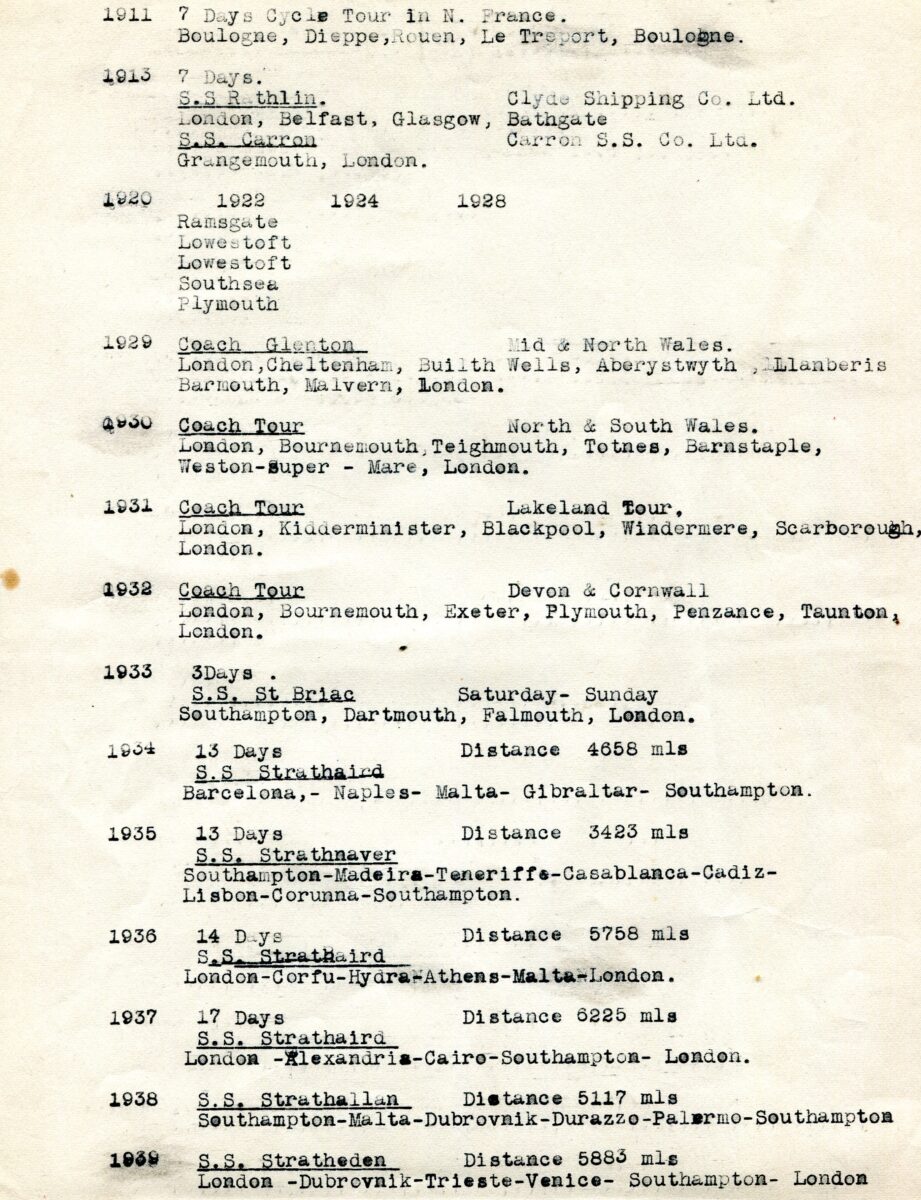
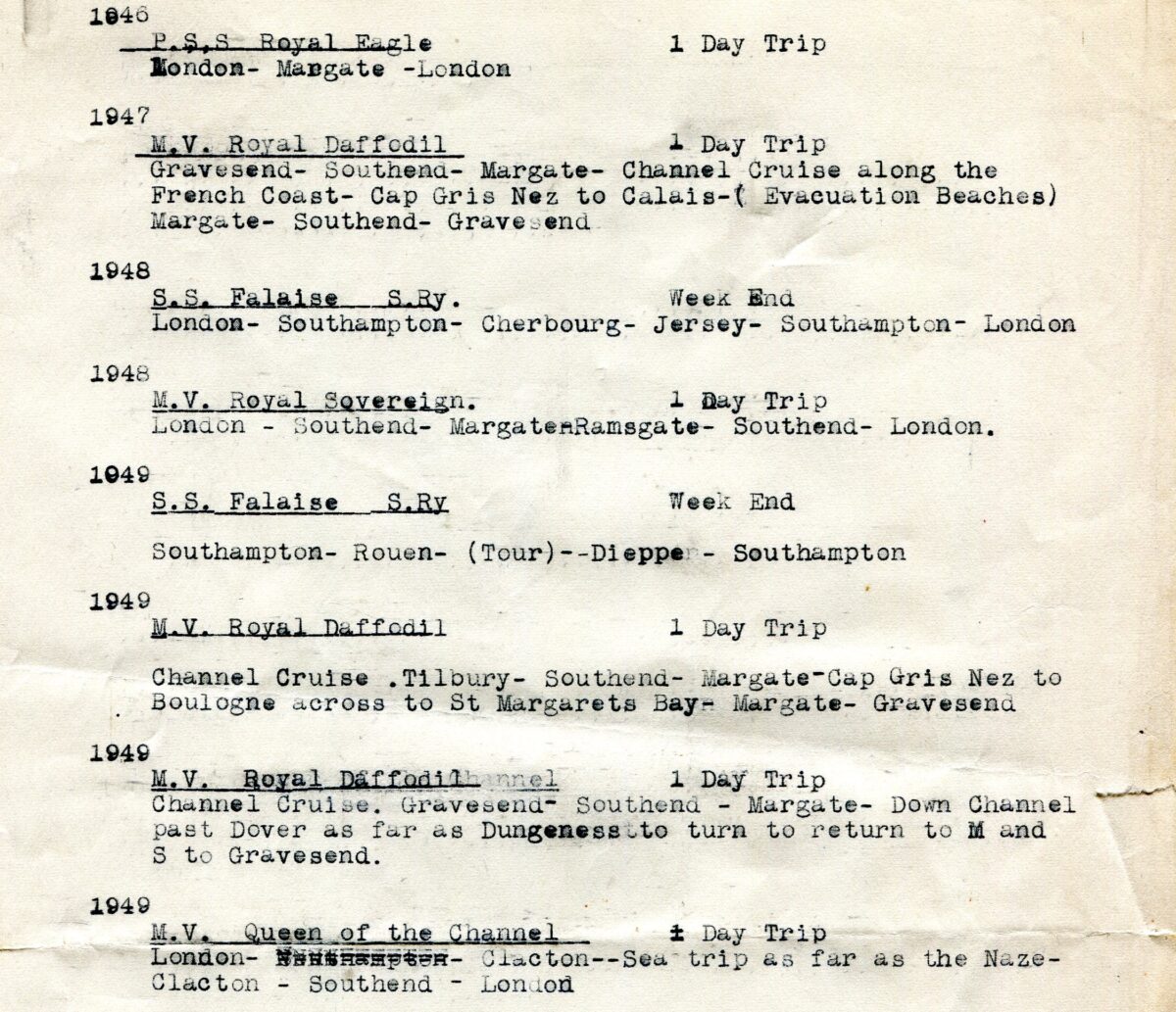
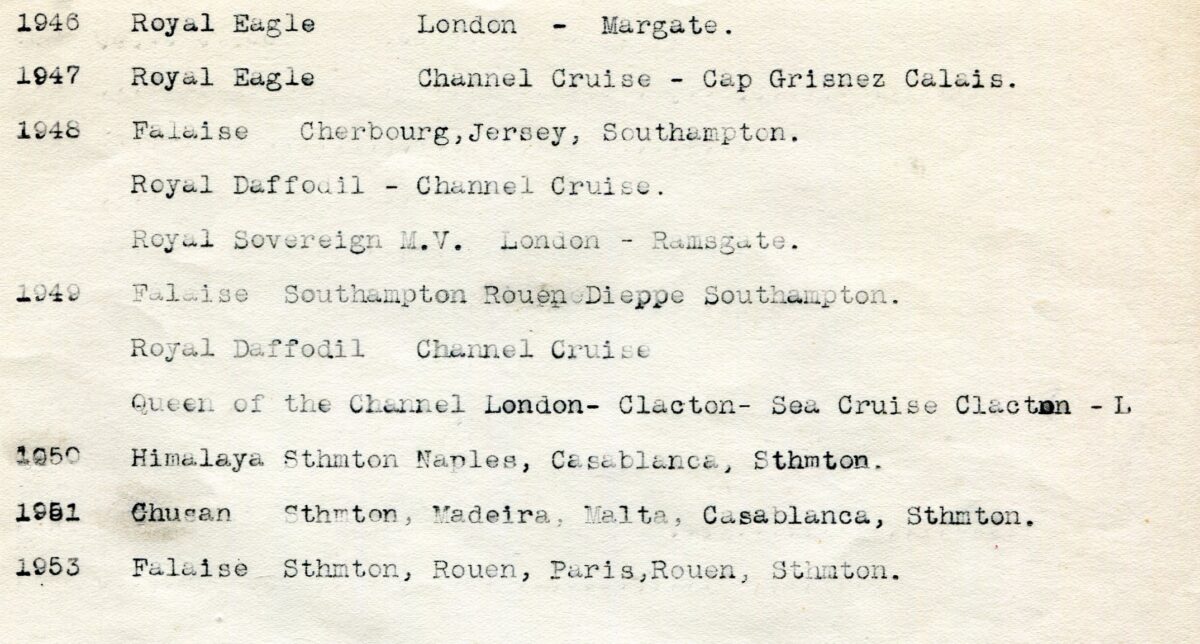
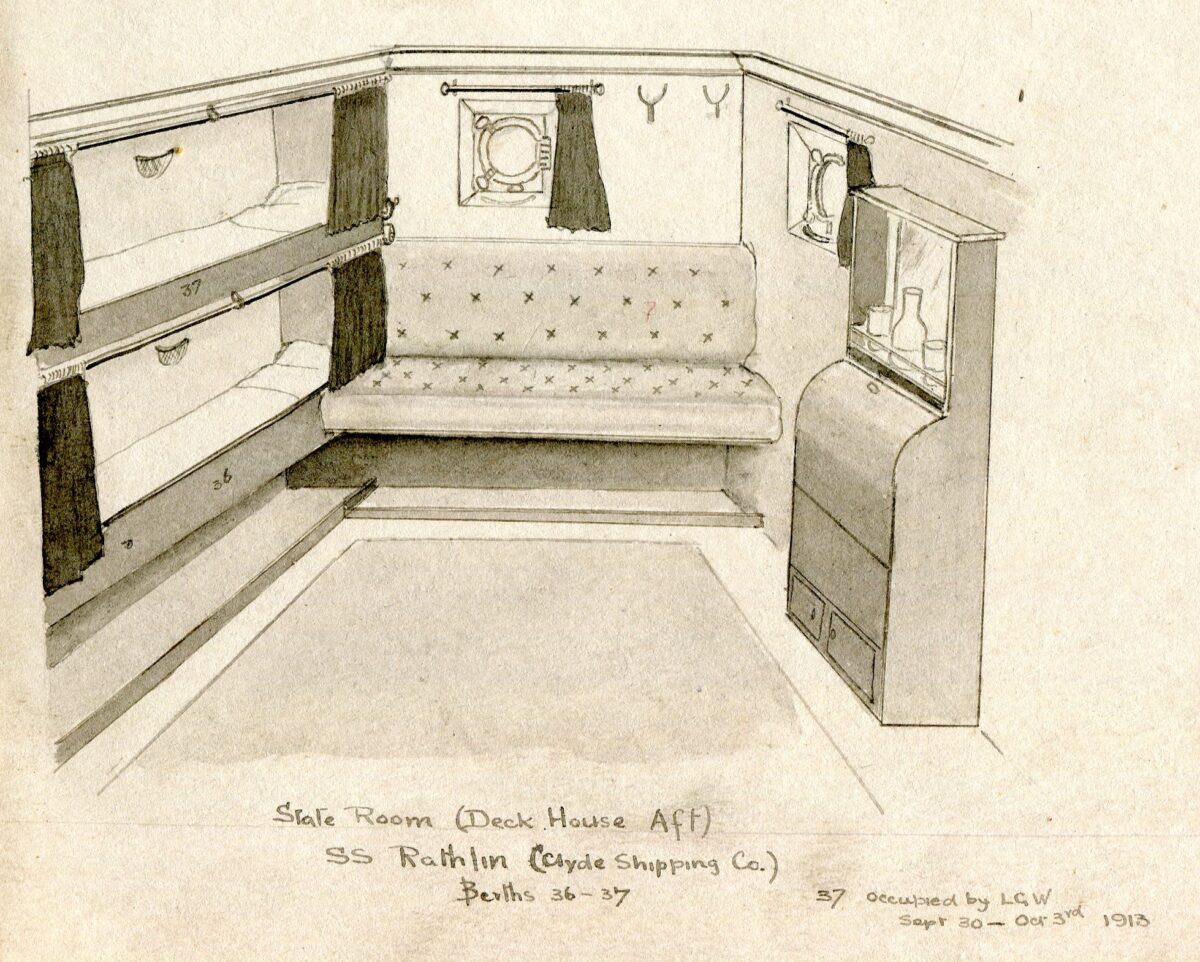
Here is the State Room occupied and drawn by Lewis Wood on his trip in 1913 aboard SS Rathlin.
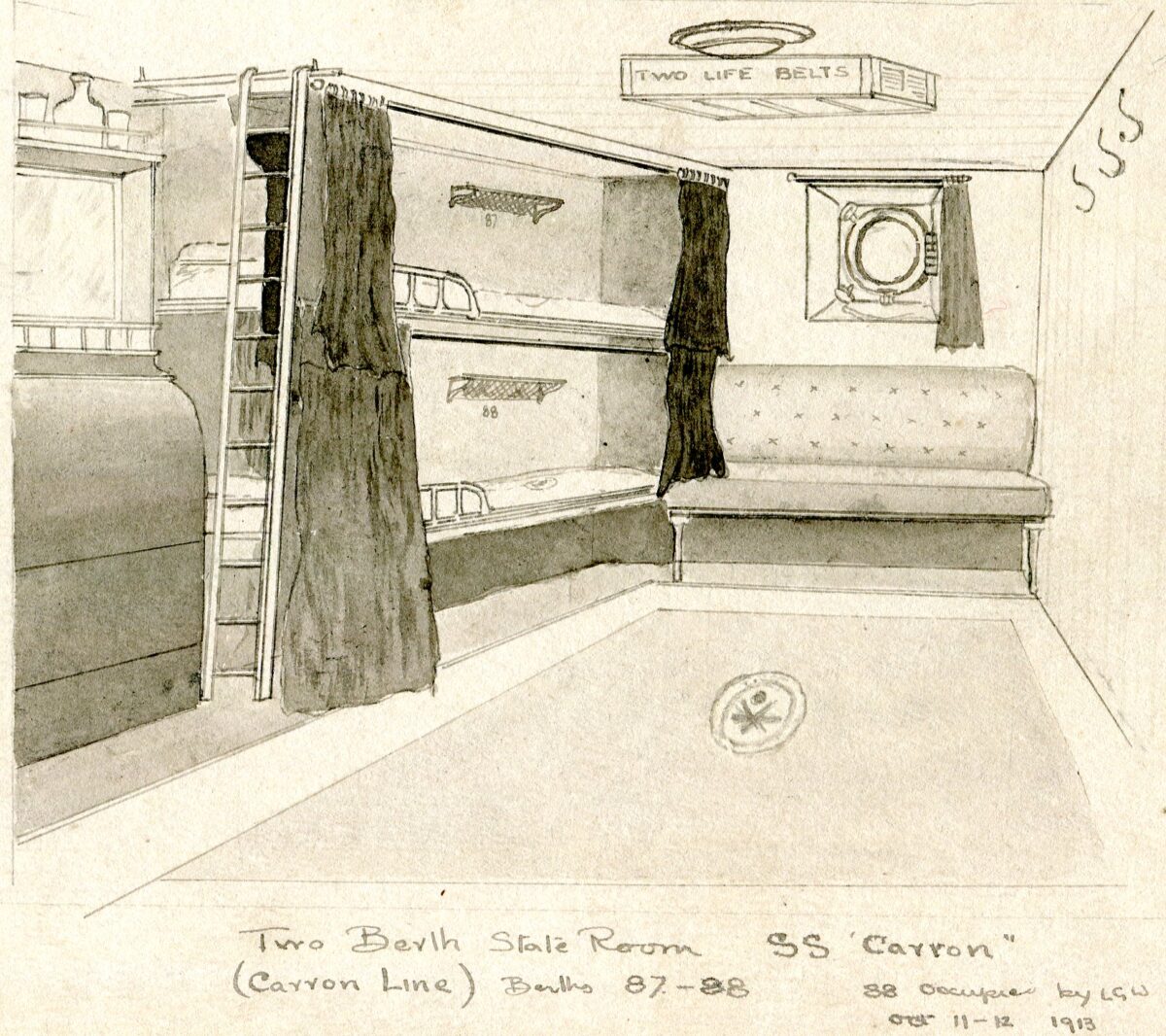
This is the State Room occupied by Lewis Wood aboard SS Carron in 1913 again drawn by him.
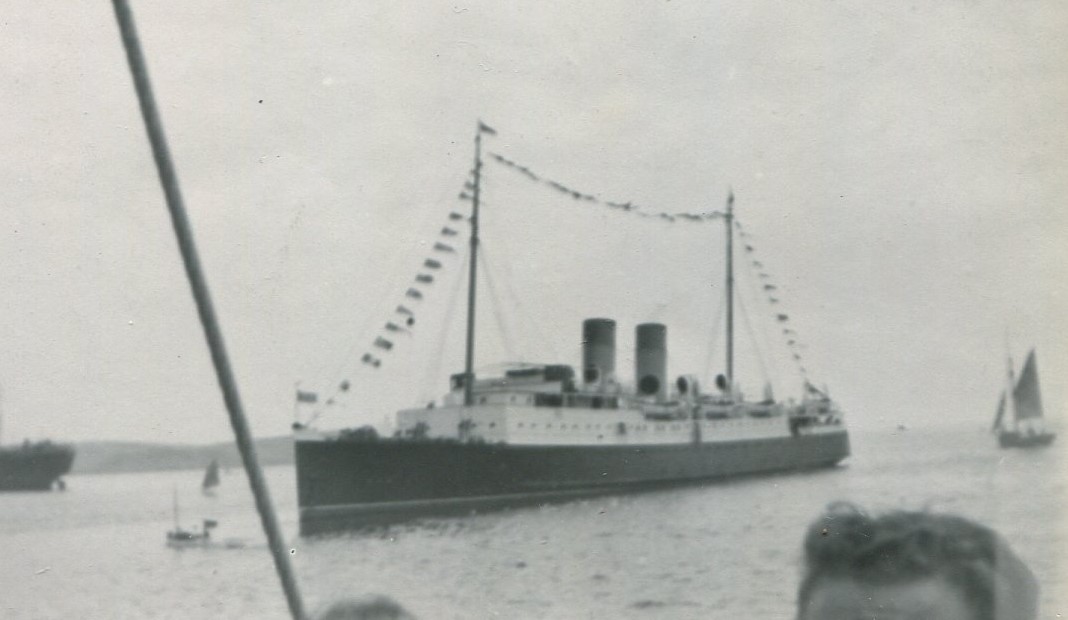
After a series of coach tours to different parts of the UK Lewis took a holiday afloat once again, now with his wife Celia, joining the Southern Railway’s St Briac from 22nd to 24th July 1933, moonlighting from her usual duties running between Southampton and St Malo, for a special cruise sailing along the Dorset, Devon and Cornish coasts from Southampton to Dartmouth and Falmouth.
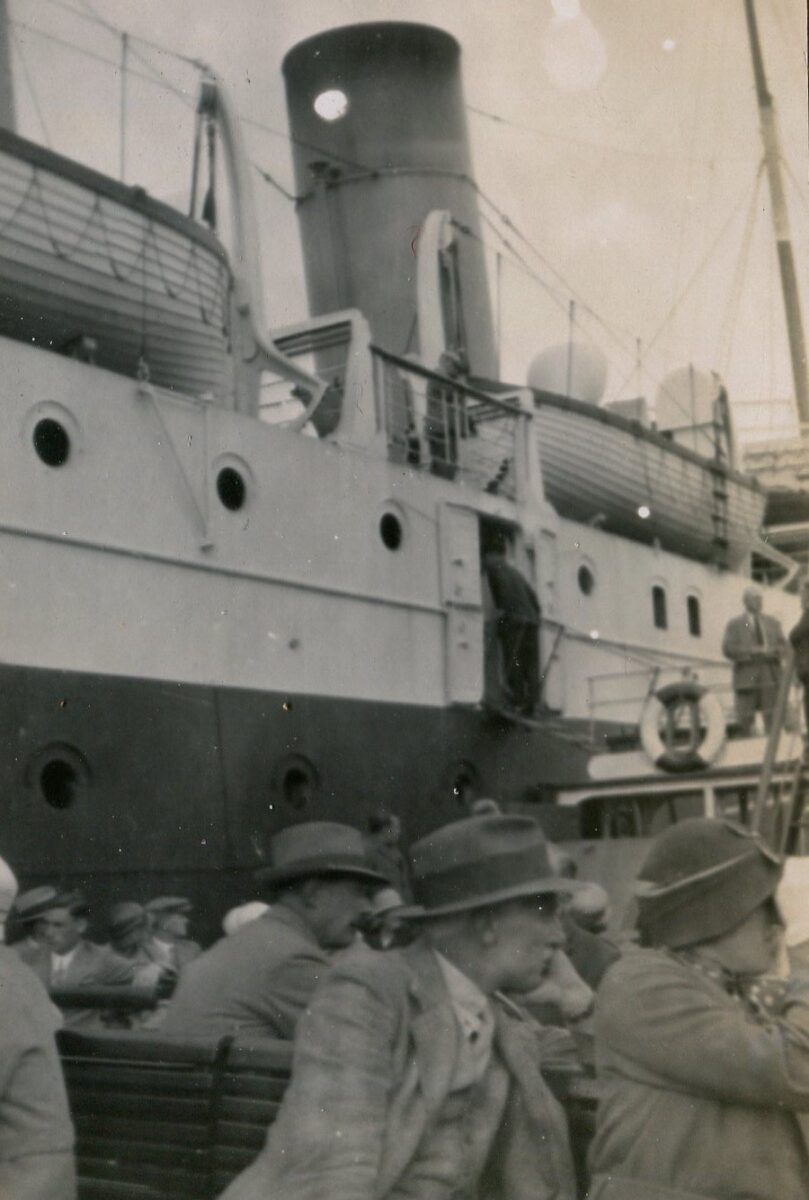
Transfers ashore at Dartmouth and Falmouth were provided by one of the Plymouth based GWR liner tenders. In this photo the passengers are going ashore at Falmouth.
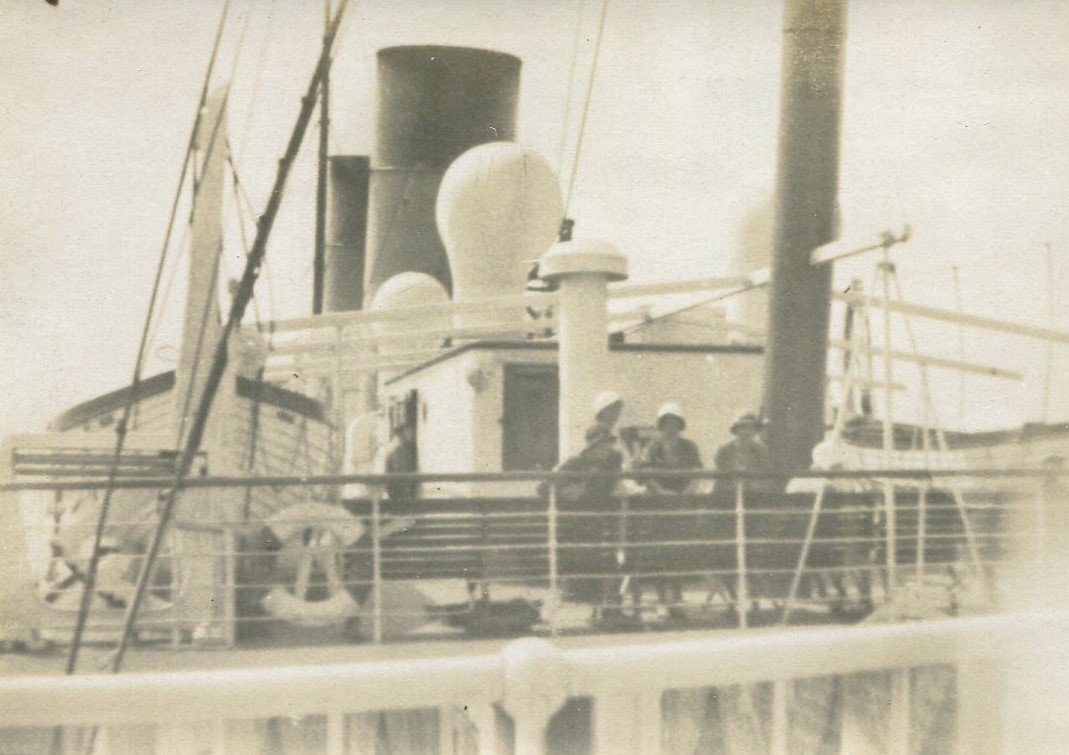
Aboard St Briac. The lady at the centre of this group looking over the railings is Lewis’s wife Celia.
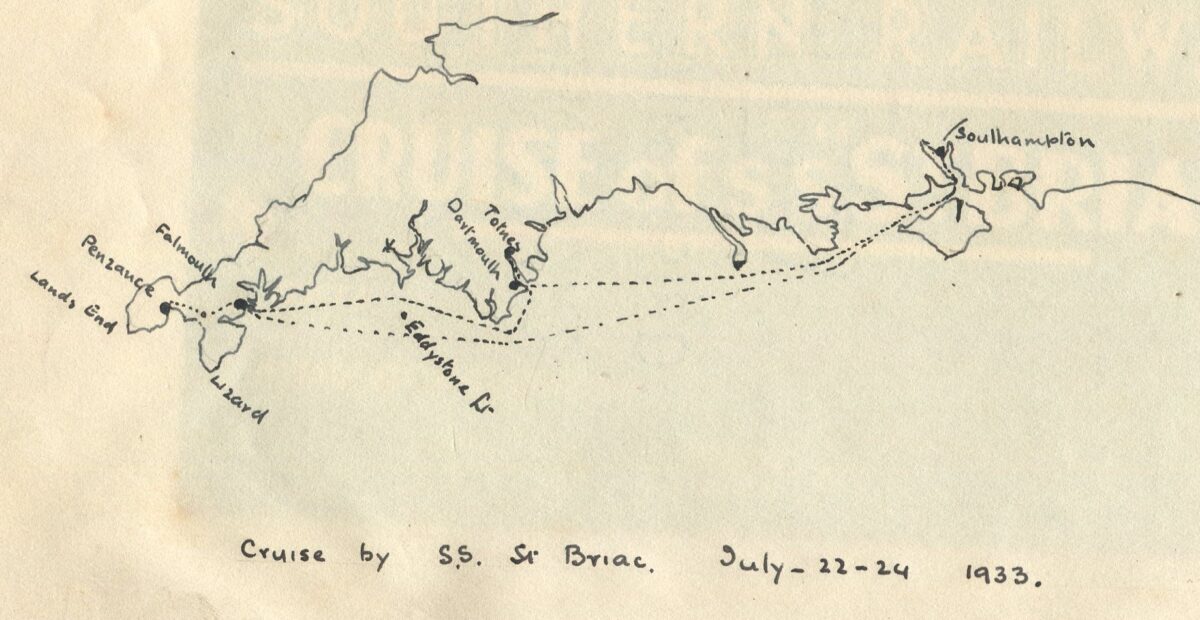
Typically, and with his usual and meticulous eye for detail, Lewis drew a map of the course of this cruise on St Briac.
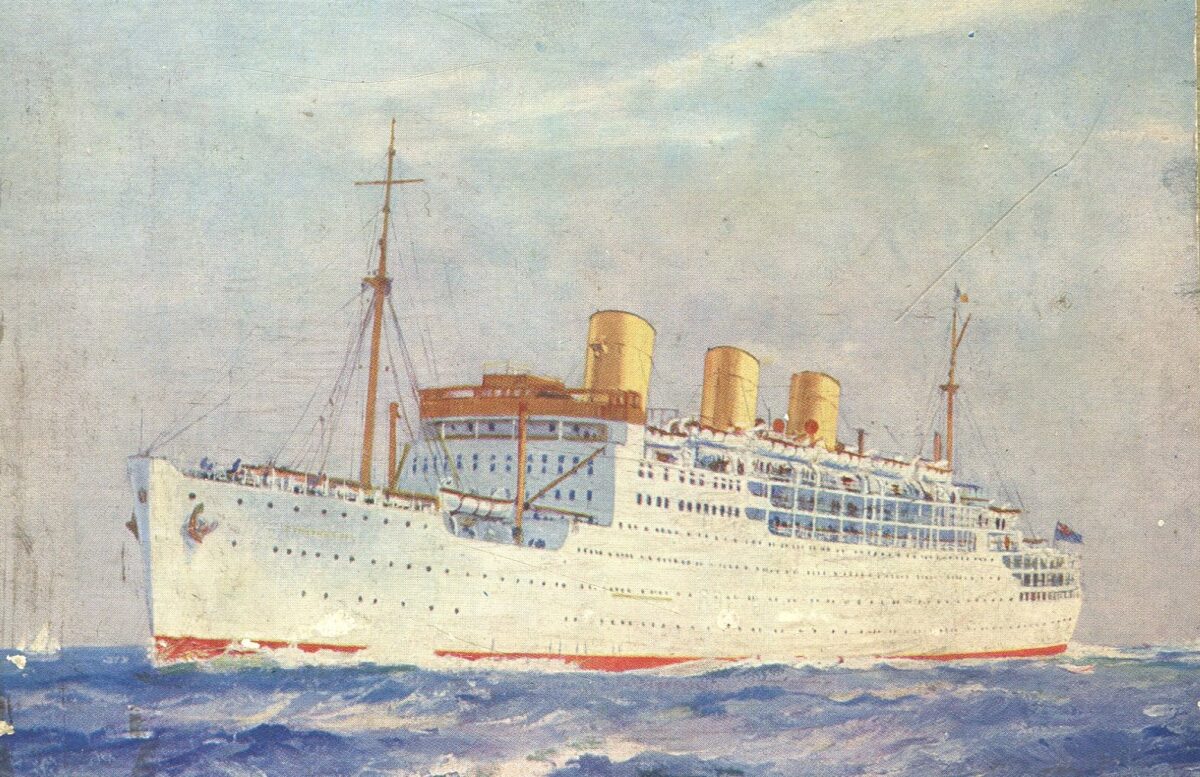
Throughout the 1930s Lewis and Celia continued to take many trips on the Thames excursion steamers but by then they had become sufficiently affluent to be able to afford to join a P & O Liner every year for their main holiday. In 1934, 1936 and 1937 they were aboard the Strathaird, in 1935 the Strathnaver, in 1938 the Strathallen and in 1939 the Stratheden.
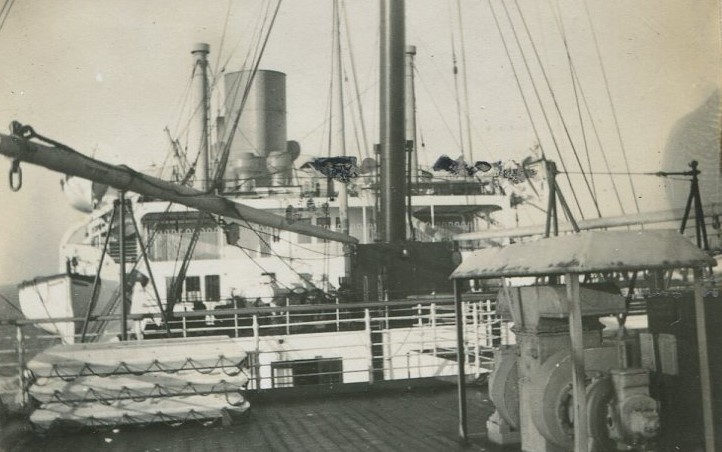
Aboard Strathaird in 1935 on their cruise from Tilbury to Madeira, Teneriffe, Casablanca, Cadiz, Lisbon and Corunna.
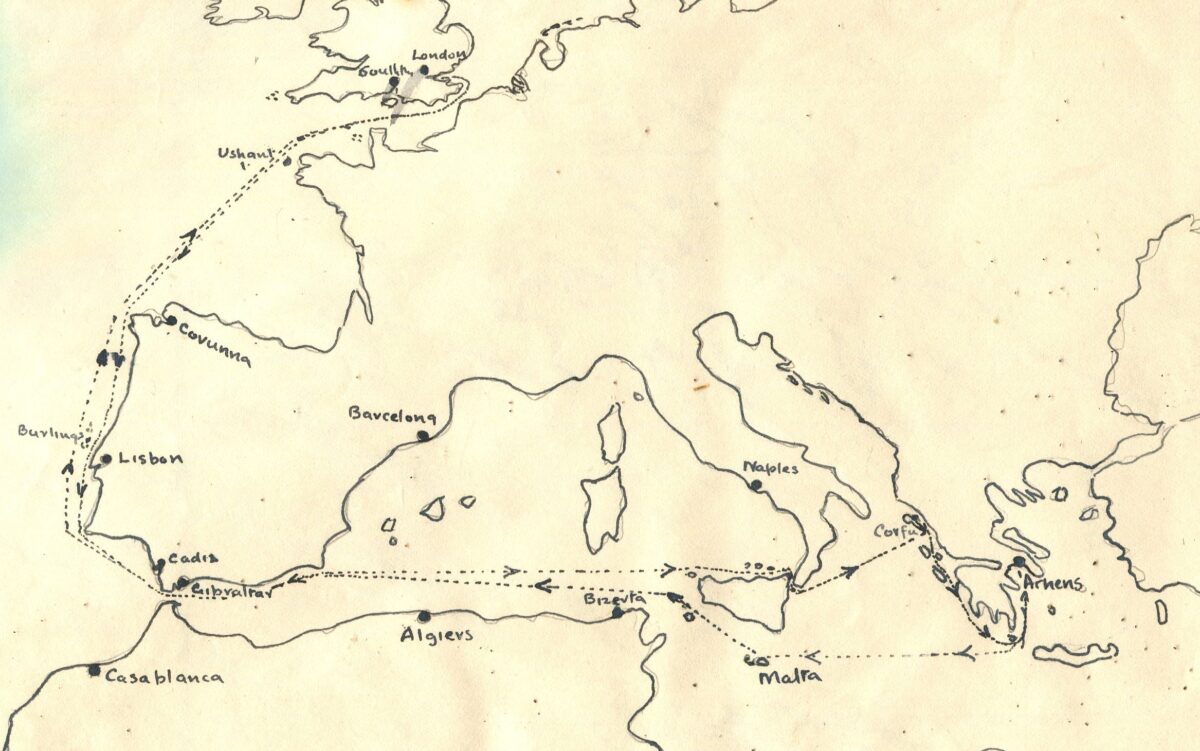
One notable feature of these cruises was just how far they went in the time available. In those days liners generally ran at faster speeds than their successors usually manage today. Now they are generally slowed down in order to conserve fuel and keep the operating costs lower. A graph of fuel consumption against speed is not linear for a ship. Pushing her on to get that extra one or two knots out of her has a disproportionate effect on ratcheting up the fuel consumption. For example, KC has four valve settings for “full ahead”. On number one the stoker has to put coal in the furnace every now and again which pushes her along at an acceptable service speed. On number four he is forever at it shovelling coal in at a far higher rate. You don’t get so many miles for your money on a liner today as you did back then.
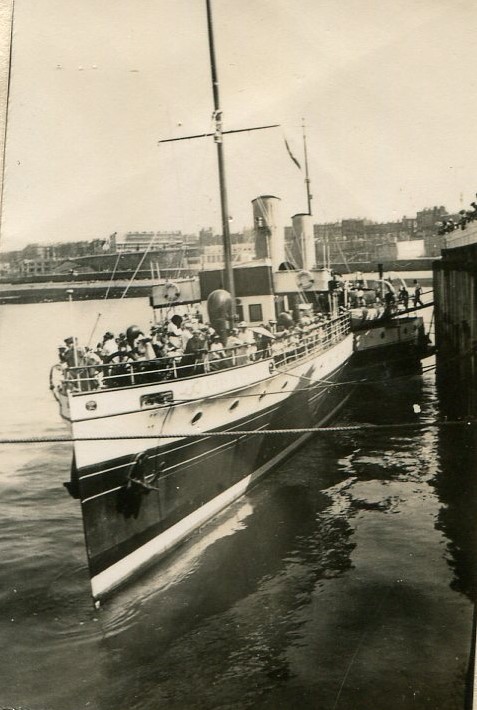
And all the while throughout the 1930s there were also the regular trips on the Thames and other excursion steamers including Queen of Kent pictured here alongside at Margate in 1935.
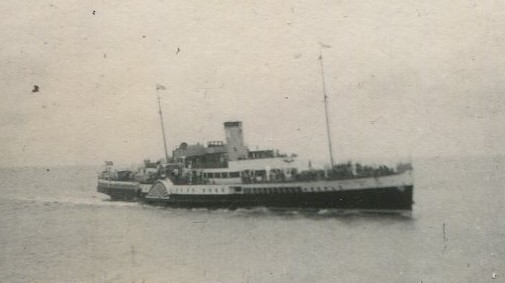
As soon as the Second World War was over Lewis and Celia were back afloat once again making their first trip in the peace aboard Royal Eagle from London to Margate in 1946.
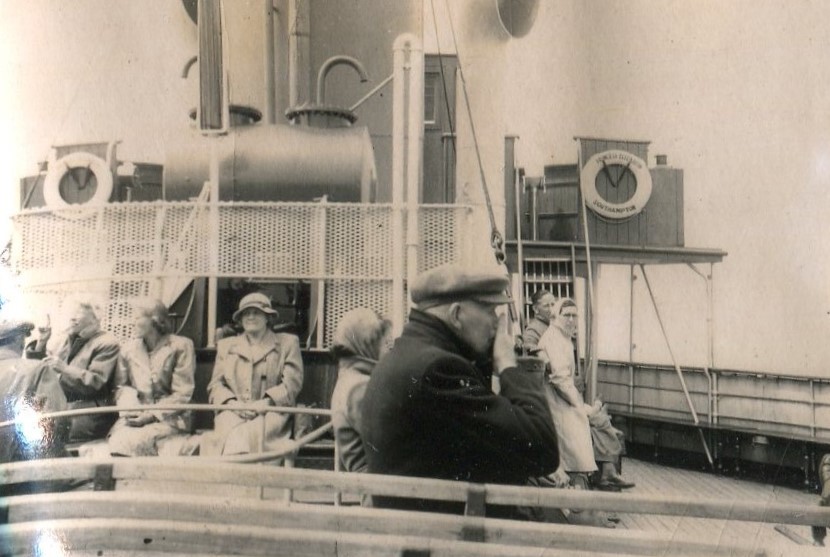
In 1947, in addition to the usual Thames excursions, there was a trip round the Isle of Wight on Princess Elizabeth. Celia is the lady in the centre just abaft the Foamite tank containing two chemicals which could be mixed in the event of a fire to flood the boiler room with fire extinguishing foam.
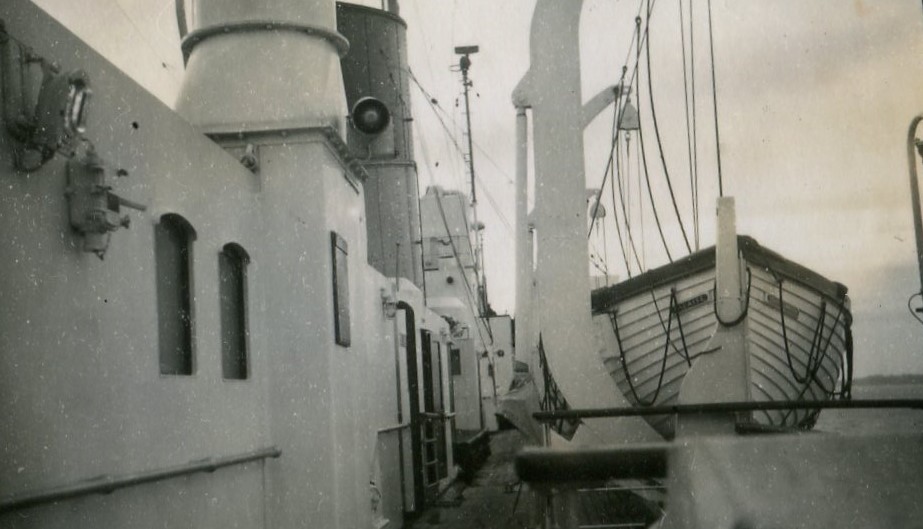
In 1948, 1949 and 1953 they took short cruises on the then almost brand new British Railways’s Cross-Channel Ferry Falaise, moonlighting as her predecessor had done from her usual duties running between Southampton and St Malo, for a special cruise from Southampton up the River Seine to Rouen and then on to Dieppe.
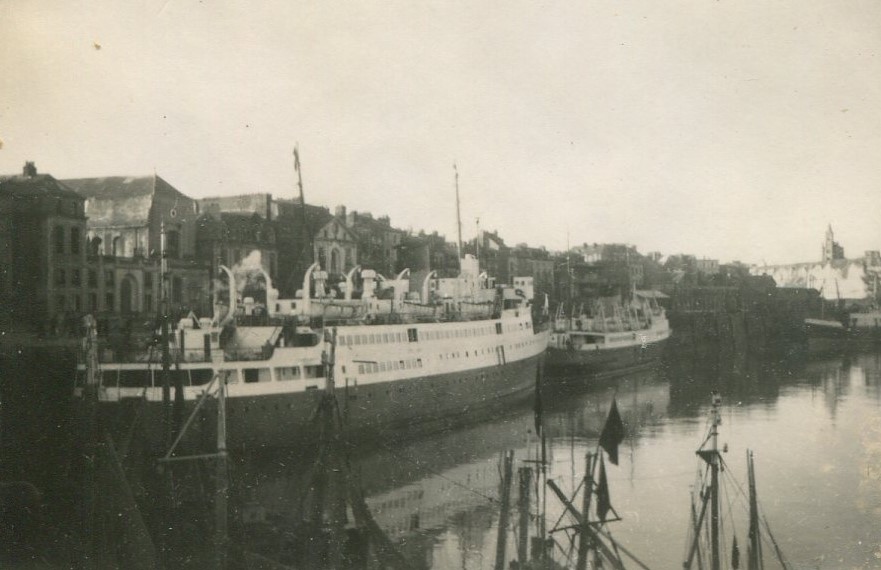
Lewis recorded that after travelling down on the 7.20pm boat train from Waterloo to Southampton on Friday 27th May 1949, he and Celia had their passports checked, their luggage opened up for inspection and were then subjected to an interrogation as to how much money they were taking out of the country before being allowed to board Falaise. After settling into their cabin Falaise slipped out into Southampton Water at midnight bound for Rouen where they berthed at 1pm on the Saturday. They were away from Rouen bright and early at 5.30am on the Sunday morning and arrived in Dieppe after lunch at 2pm for time ashore. Departure was at 11pm by which time some of the passengers were a little bit the worse for wear having topped themselves up in Dieppe’s many bars and other hostelries. Lewis recounts that there was a certain measure of frivolity on the Dieppe Quayside before departure with a number of passengers being late, some being in party mode and one man arriving flat out on a luggage trolley being pushed along by his mates. Eventually Falaise got away and after a smooth crossing was back in Southampton at 7am on the Monday morning. Lewis and Celia then boarded the special boat train which was away from the docks at 7.40am and deposited them back at Waterloo at 9.40am.
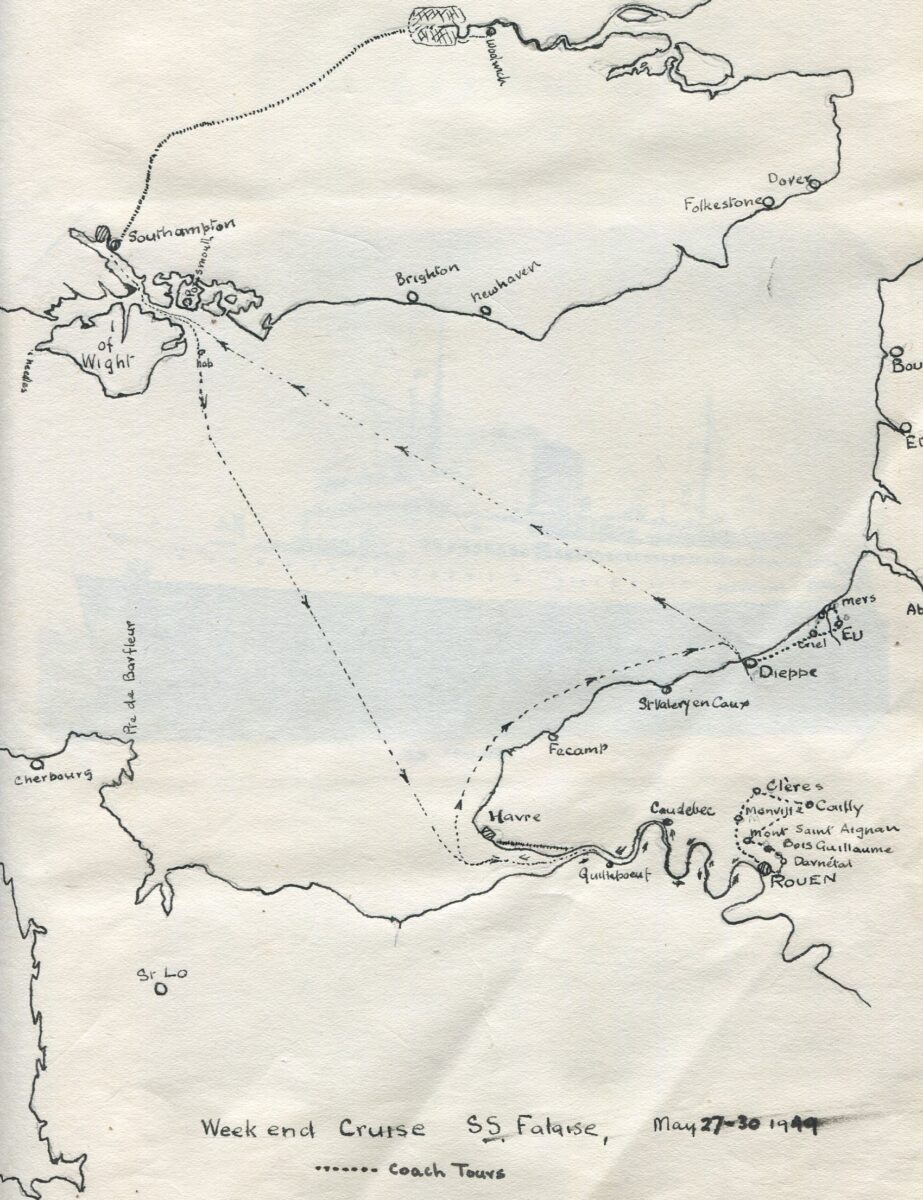
Once again Lewis drew a map of the trip in 1949.
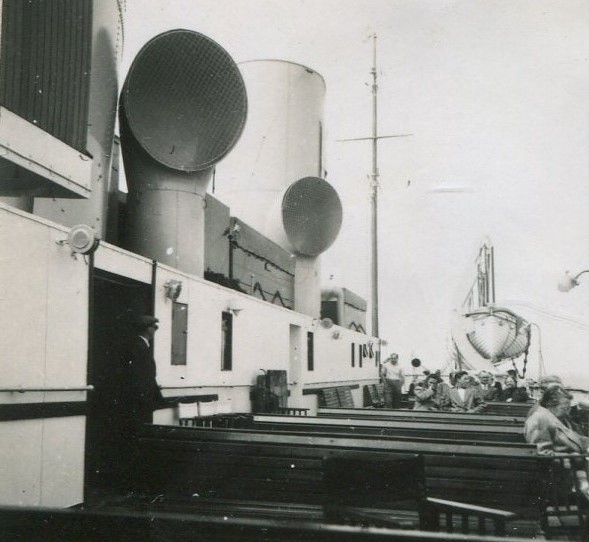
On 29th June 1949 Lewis and Celia were aboard Royal Daffodil for a cruise to view the French Coast from Gravesend calling at Southend and Margate on the way. Lewis recorded that he boarded Royal Daffodil at Gravesend at 8.40am for a 9am departure and that “there were not many aboard but the morning was bright and the sun gave every promise of a warm day”, They called at Southend at 10.15am where some passenger disembarked and others boarded. Then it was off down the Thames passing the Nore Forts, “the wreck of a large cargo vessel on the sand being demolished with salvage vessels in attendance”, the Red Sands, Shivering Sands and Tongue Sands forts, the latter with a 15 degree list due to subsiding foundations and on to Margate at 12.05pm where more of the passengers went ashore and others came aboard.
Then it was time for “a cold lunch in the dining saloon of ham, salad and new potatoes followed by tinned peaches and custard and completed with a roll and cheese” as Royal daffodil continued on her voyage passing to the east of the Goodwin Sands and across the Channel to Cap Griz Nez. Lewis recounted “On the high ground by the Cap one could see huge concrete gun emplacements which housed the 18″ guns which shelled the English coast and shipping passing through the Downs and further south an emplacement for launching of V2 missiles which caused so much damage to London during the war”. Then off Boulogne they swung north and crossed back to the English Coast making a landfall off Dover where they spotted Queen of the Channel heading for Dover Harbour. Then it was on past Deal and Ramsgate. Lewis recorded “After passing Ramsgate another visit was made to the dining saloon for tea, not a bad tea – fried fish, chipped potatoes, bread, butter, preserves and tea, By the time this was finished we were close to Margate where we docked at 5.30pm.”
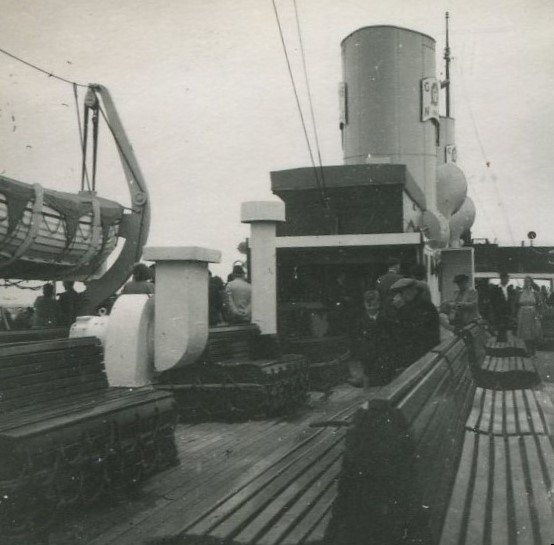
Lewis continued “We left Margate in brilliant sunshine, made a semi-circular course from the pier to the main channel of the Thames Estuary by the Tongue Fort and then westwards. We had been travelling well up to now when whilst we were passing the Shivering Sands Fort the even rhythm of the engines ceased. A visit to look through the engine room door showed the staff busy with the differential tackle on one of the cylinders. The ship was soon under power again but did not appear to be travelling so fast and seemed to have more vibration. We arrived at Southend at 8.25pm instead of the 7.30pm scheduled. We then continued on to Gravesend where we arrived at 9.40pm one hour and ten minutes late. It was 11pm before we arrived at our home in Woolwich Arsenal. A pleasant day, sunny, bright, a few clouds but away from the shore rather cool due to the north easterly breeze.”
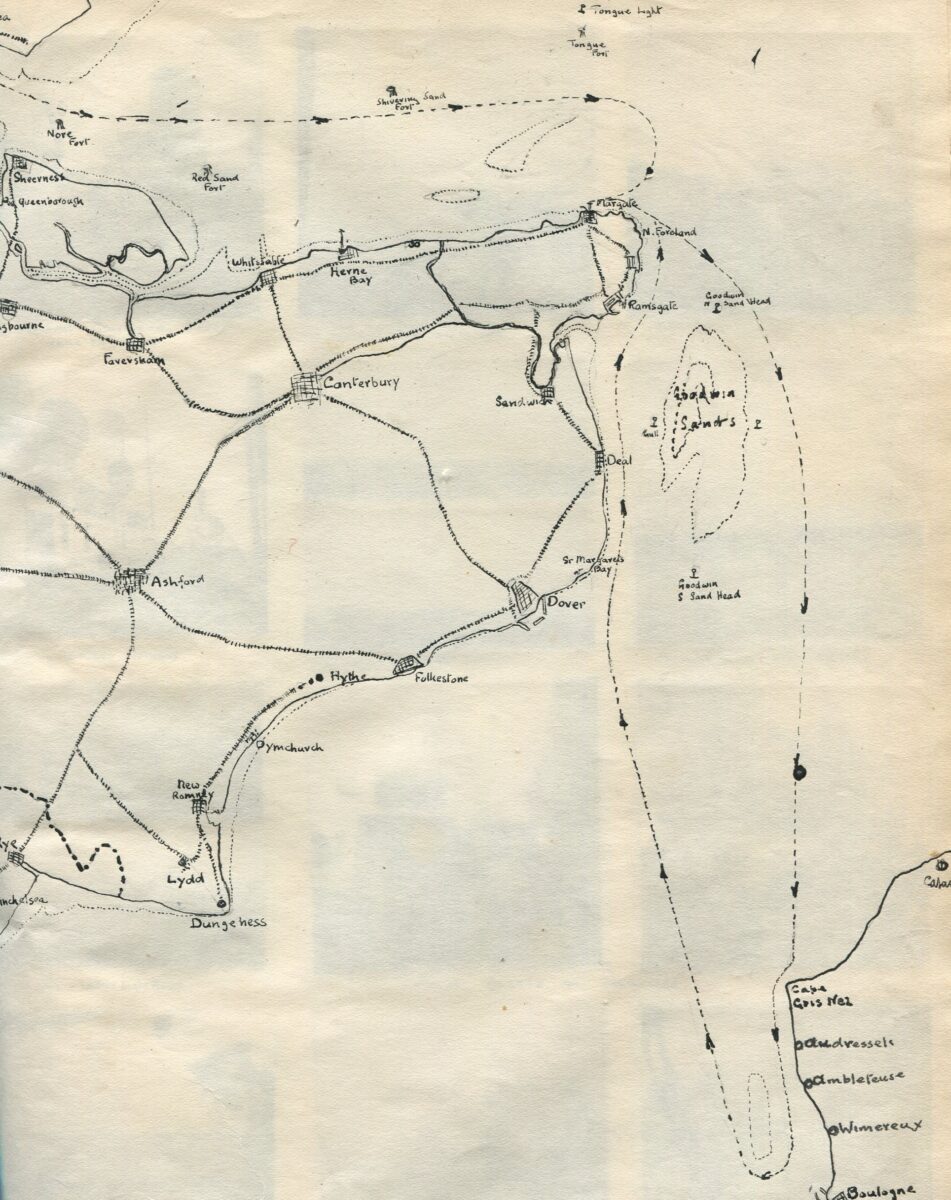
Here is a map of the route that day drawn by Lewis. There were no calling points in France as no passport trips to land were not permitted after the war until 1954. And whilst Lewis and Celia had passports most people didn’t in that era before mass foreign holiday travel took off big time in the 1960s.
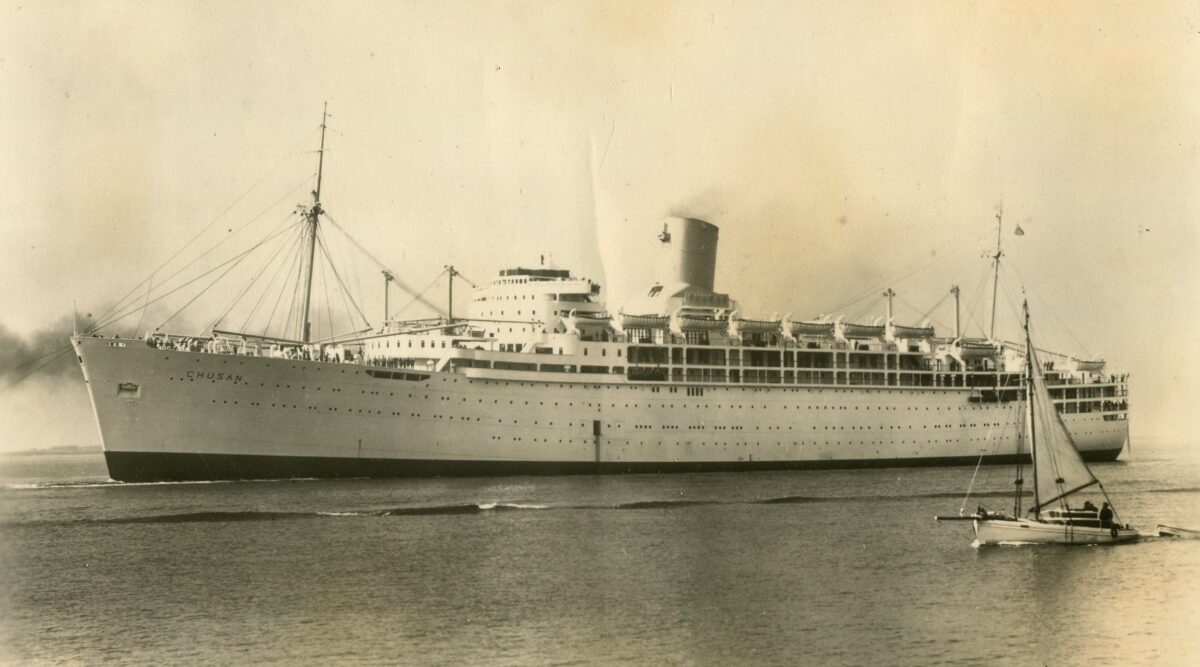
Lewis and Celia were back on the liners once again in 1950 taking a cruise on Himalaya from Southampton to Naples and Casablanca and then the following year aboard Chusan from Southampton to Madeira, Malta and Casablanca.
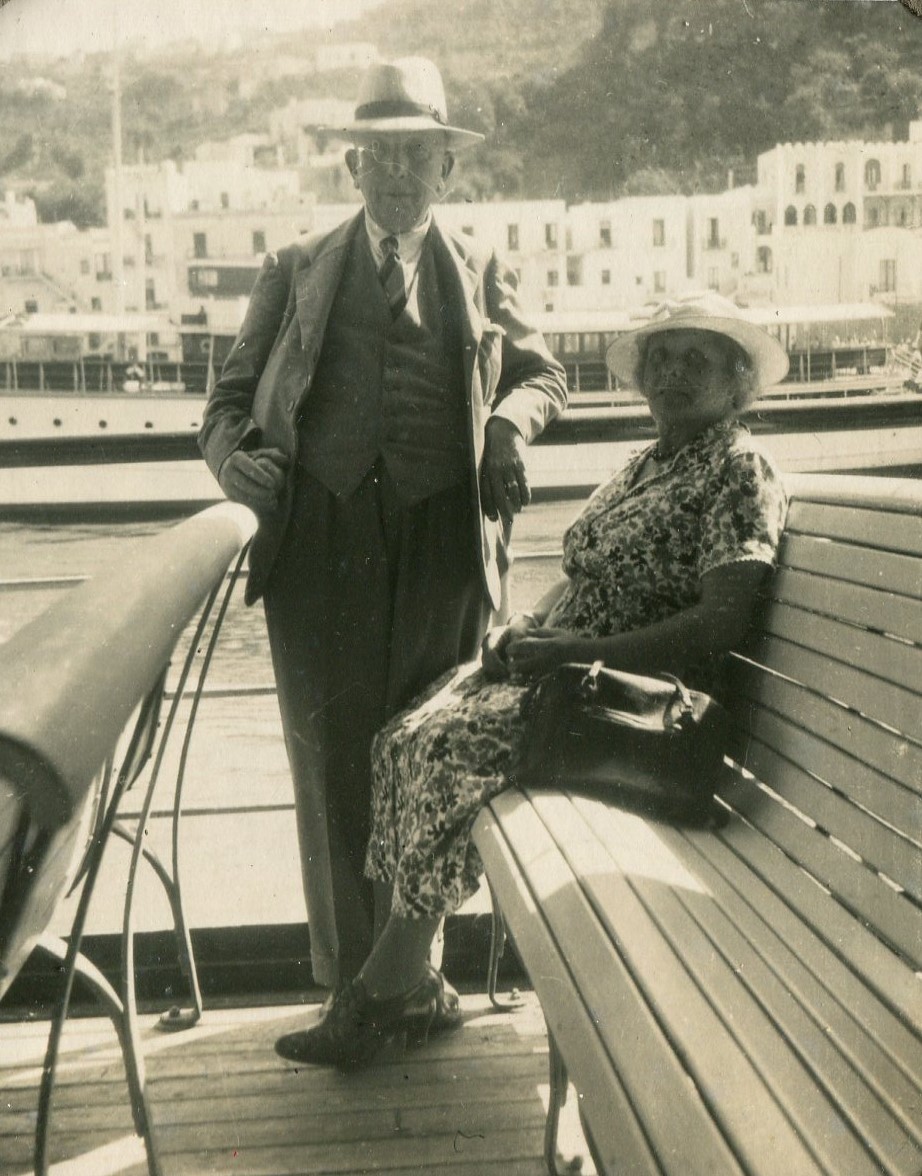
Here they are in Capri aboard the local ferry from Naples in 1950. Lewis was born on 18th March 1887 so would have been 63 when this picture was taken. Celia was born on 3rd July 1884 so she would have been 66. Celia was the step-sister of Stafford Ellerman’s father so they were always Uncle Lewis and Auntie Celia to Stafford.
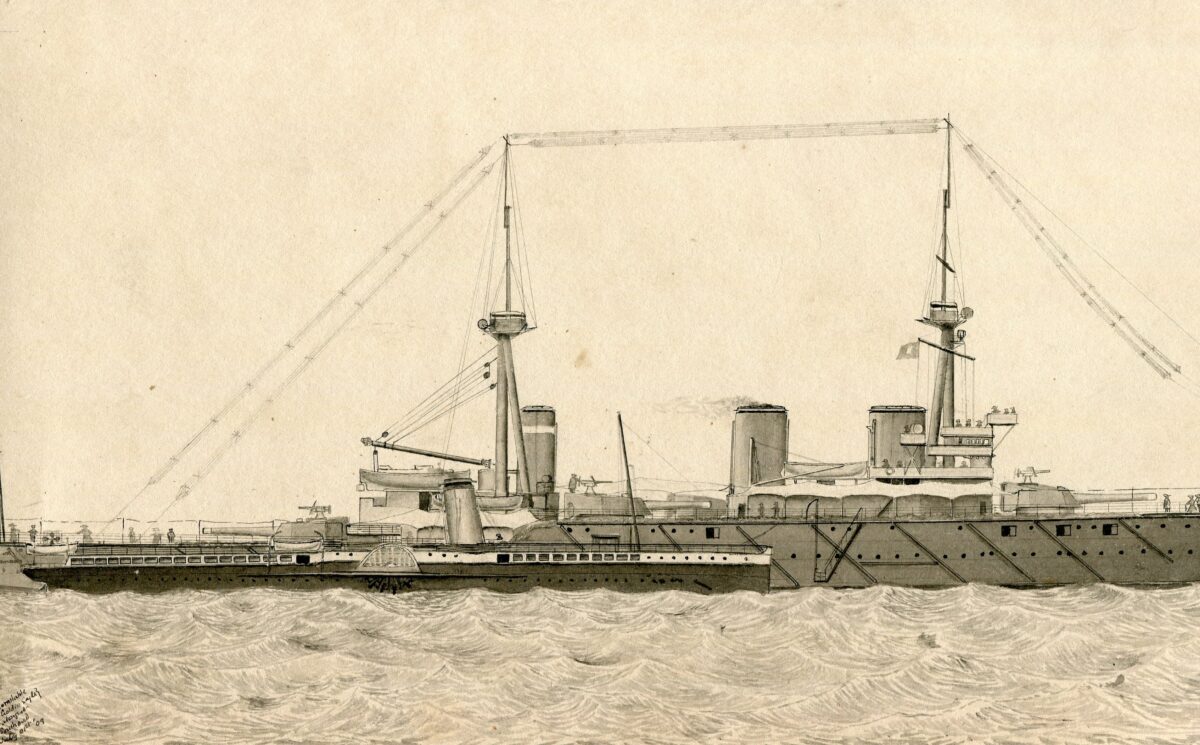
Lewis retired on 30th September 1952 when he was 65. The last journey afloat he recorded was in May 1953, again aboard the Falaise from Southampton to Rouen. That was forty-four years after he had visited HMS Indomitable aboard Golden Eagle for the magnificent Naval Fleet Review of 150 warships off Southend on 21st July 1909, aged 22, an event which he so nicely captured in this picture.
With thanks to Richard and Charlie Turner for their help sorting through and identifying material for this post from the archive of the late Stafford Ellerman.
Kingswear Castle returned to service in 2023 after the first part of a major rebuild which is designed to set her up for the next 25 years running on the River Dart. The Paddle Steamer Kingswear Castle Trust is now fund raising for the second phase of the rebuild. You can read more about the rebuilds and how you can help if you can here.
John Megoran

